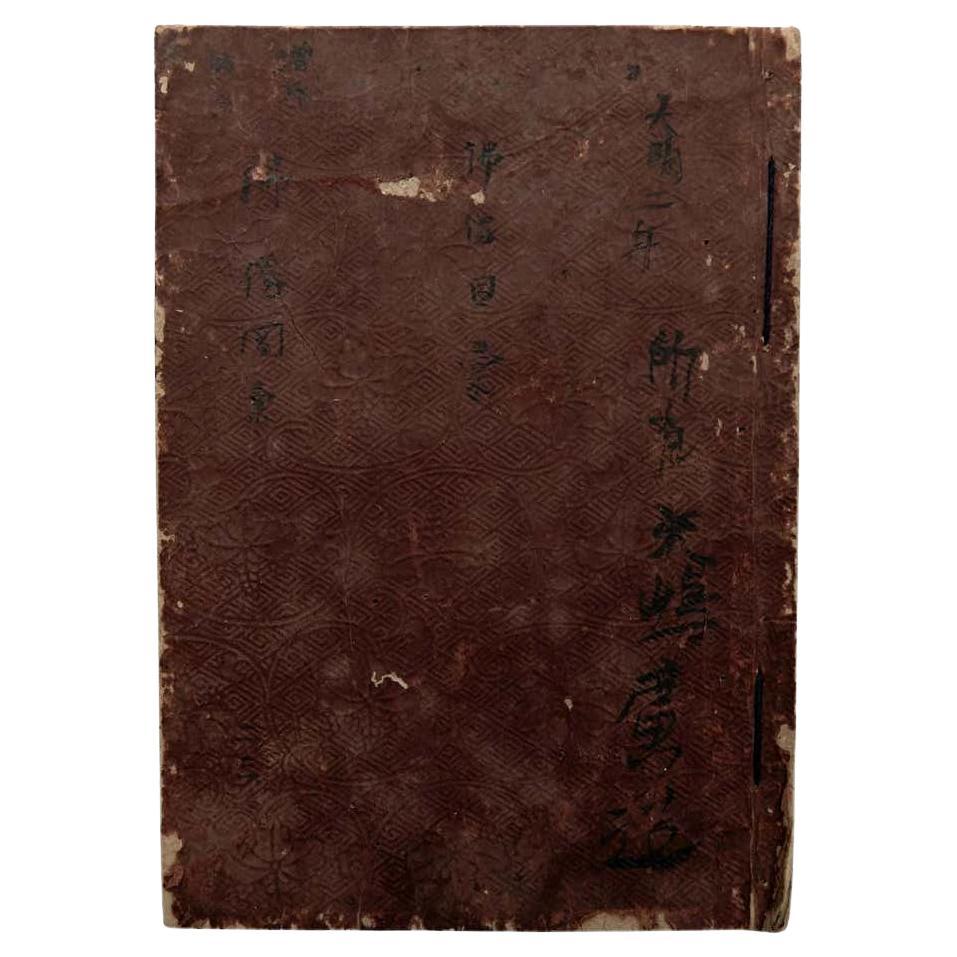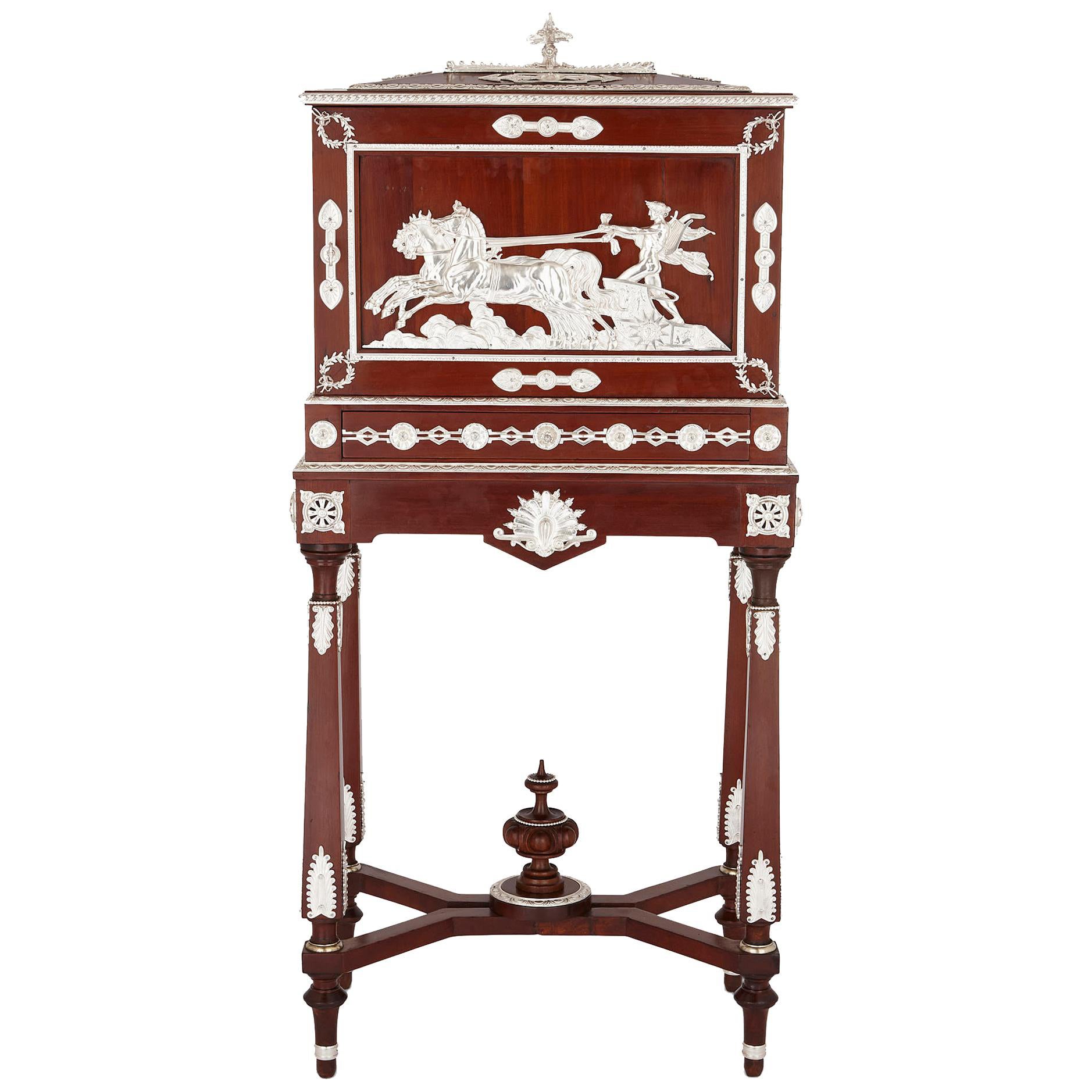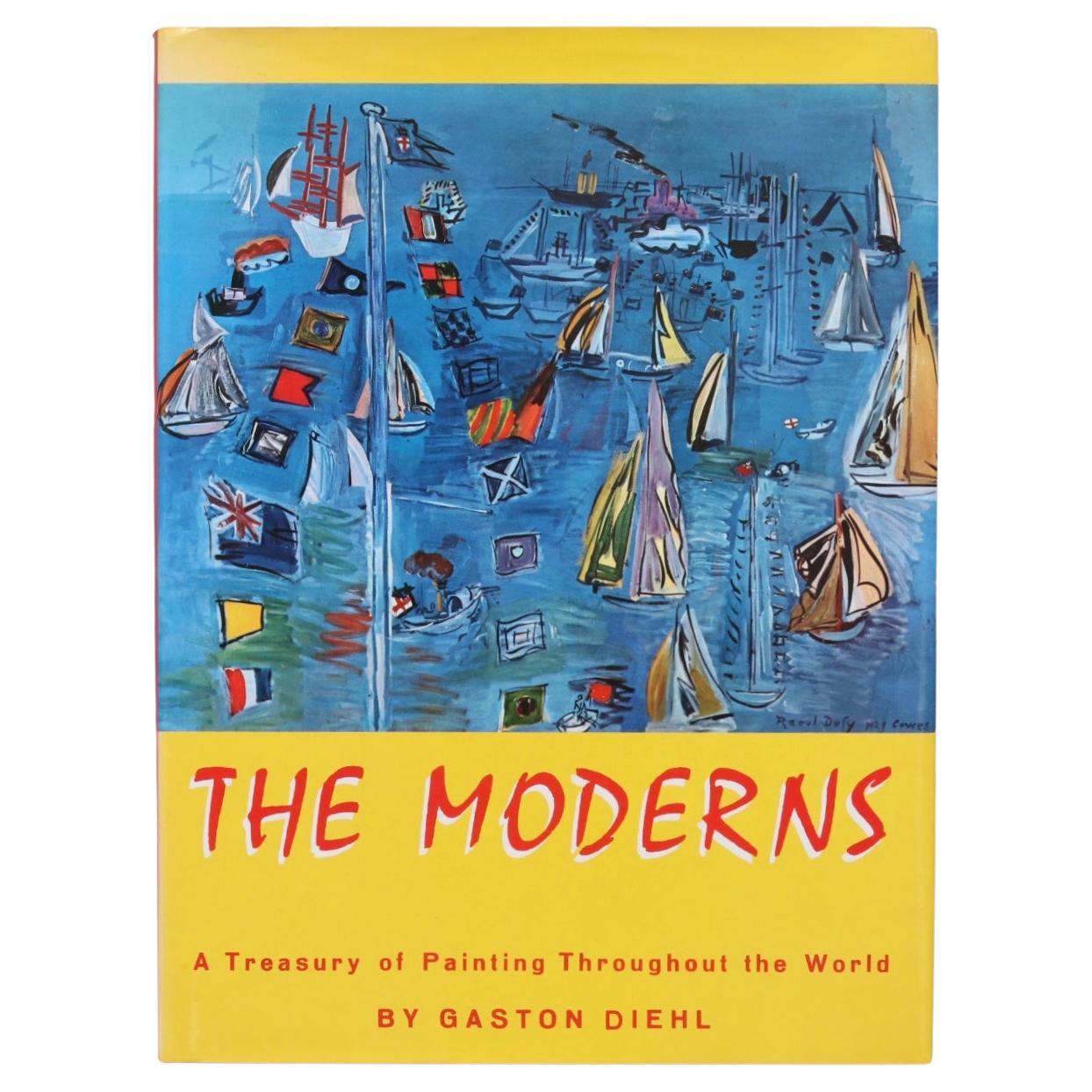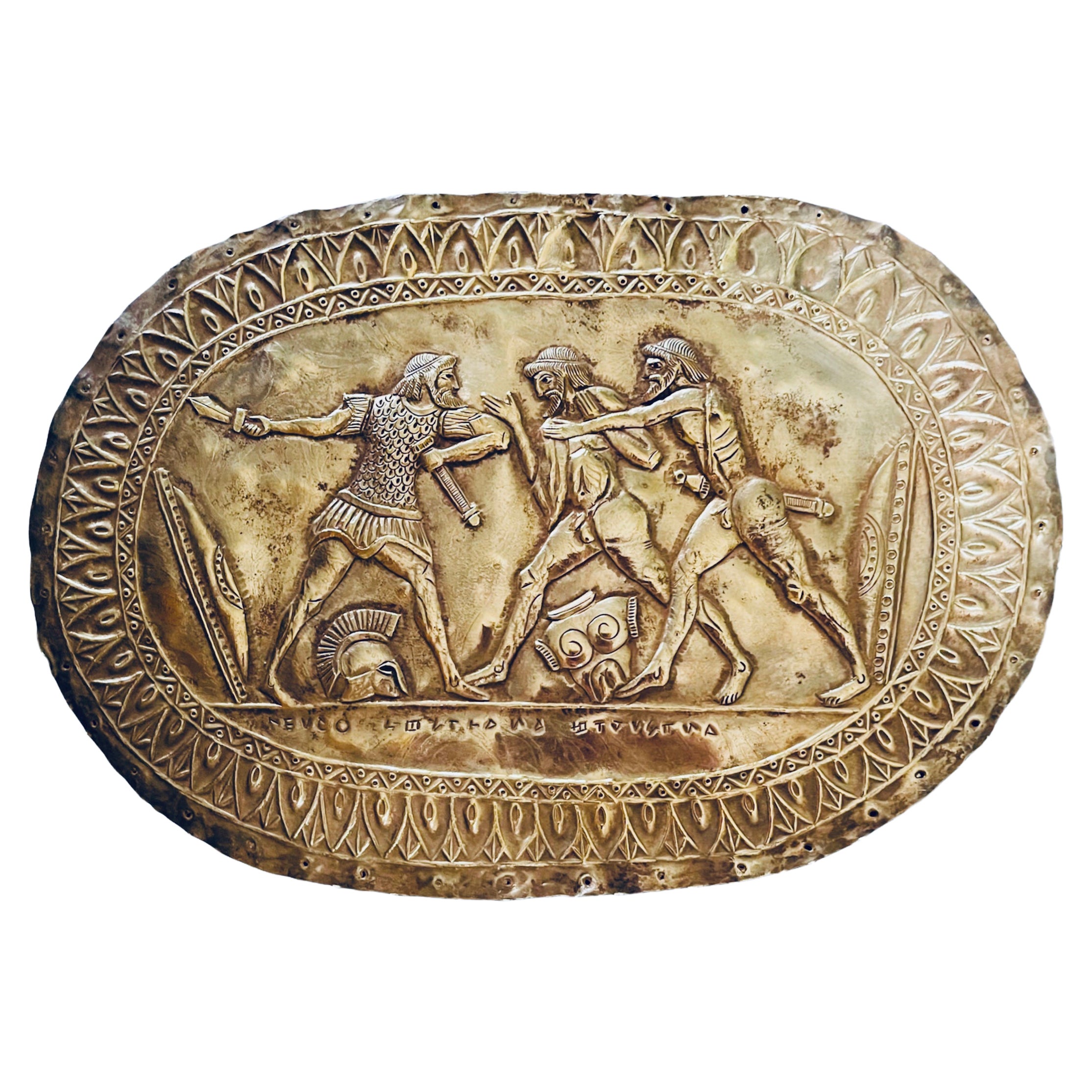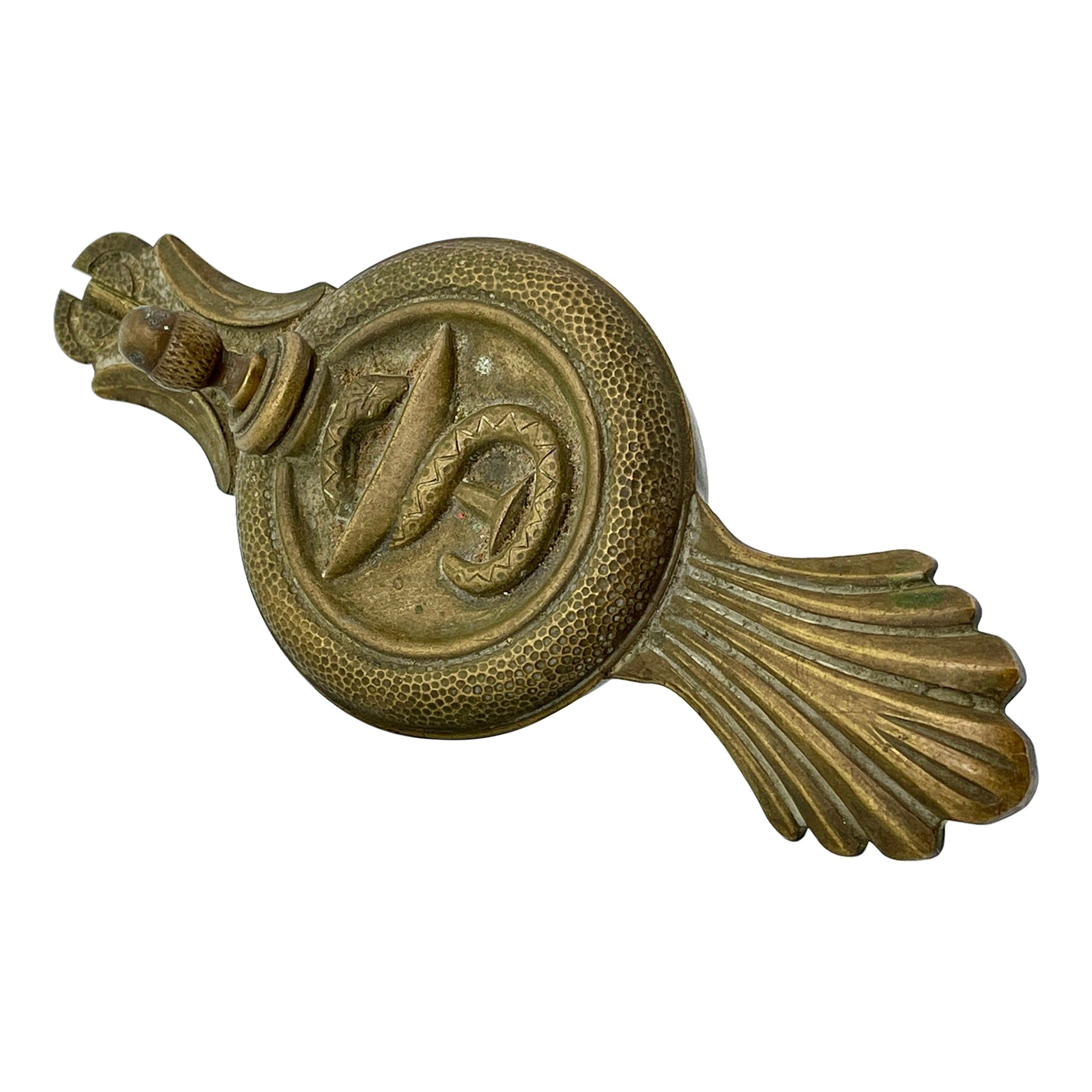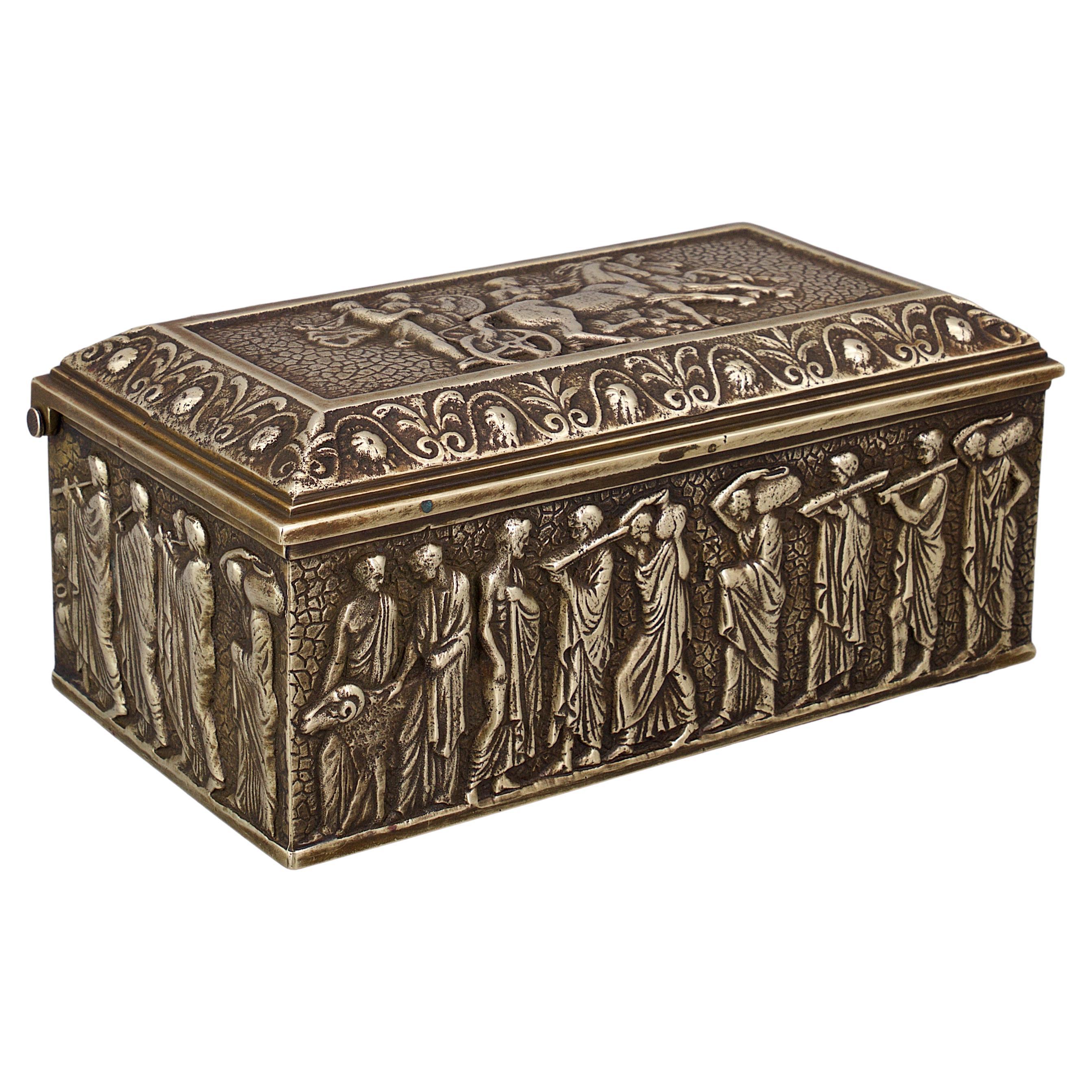Items Similar to Neo-Greek Cigar Cellarette, C.G. Diehl, E. Frémiet & J. Brandely, Circa 1867
Want more images or videos?
Request additional images or videos from the seller
1 of 7
Neo-Greek Cigar Cellarette, C.G. Diehl, E. Frémiet & J. Brandely, Circa 1867
About the Item
Rare cigar humidor made in wood, with a front flap, discovering five sliding cane trays. Beautiful bronze and silver electroplated brass ornaments, such as the central niche decorated with a winged creature, surmounted on top of the cabinet with a feline. Resting on four tall legs joined by a stretcher decorated with a silvered pierced bronze incense burner.
The central relief of that cellarette for cigars, with that fantasy creature, is directly inspired from the one designed by J. Brandely for the front door of the Merovingian Cabinet made by Diehl in 1867, and now preserved at the Metropolitan Museum of Art in New York (Inv. 1989.197).
Arriving in Paris in about 1840 Charles-Guillaume Diehl (1811-1885) founded his cabinet making and decoration firm at 19 rue Michel-le-Comte in 1885. His workshops produced elegant little pieces of furniture in rosewood and thuja and novelties with bronze and porcelain embellishments (see « Les ébénistes du XIXème siècle »,D. Ledoux-Lebard, Ed. de l’amateur, 1982, p.164). It was his luxury boxes, however (liqueur cellarettes, cigar cabinets, games boxes, cashmere cases, jewelry cases) which assured Diehl’s renown (see « l’Art en France sous le Second Empire », Exposition Grand-Palais, Paris, 1979, p.133). Already rewarded with a bronze medal at the Universal Exhibition of 1855 in Paris, he exhibited a jardinière with china columns and a liqueur cabinet at the Industrial Arts Exhibition in 1861.
In collaboration with the designer Jean Brandely (active between 1867 and 1873), Diehl renovated his decorative repertory and created astonishing pieces of furniture in the Grecian style which had a dazzling success at the Universal Exhibition in Paris in 1867, where his cabinets also won a silver medal. Certain motifs were so typical of Diehl’s work that they received extensive commentary by the art critic J. Mesnard in his book « Les Merveilles de l’Exposition Universal de 1867 » (vol. II, pp. 133 & 149). He writes of a table of which « the pendant bearing hooks and the fan shaped radiating motif which ornaments the entablature are engraved with love » (p. 133) and a jewelry case where « The head in fine Grecian style makes up the essential part of the fine gilt bronze ornementation » (p. 149).
For this Universal Exhibition of 1867, Diehl also formed a partnership with two famous sculptors : Emile Guillemin (1841-1907) who carved the relief for a mahogany sideboard with galvanic gilt bronzes (Orsay Museum, Paris, Inv. O.A.O. 992) and Emmanuel Frémiet (1824-1910) who executed the low relief for a cedar medal cabinet with marquetry and silver plated bronzes (Orsay Museum, Paris, Inv. O.A. 10440). Diehl was again rewarded with a medal of honour at the Union Central Exhibition of 1869 and a progress medal at the Universal Exhibition in Vienna in 1873 (Sideboard in blackened pear wood and lemon wood with galvanic bronzes, designed by J. Brandely with a low relief by E. Guillemin, Orsay Museum, Paris, Inv. O.A.O. 336). Showered with praise by the critics, Diehl is considered as one of the most innovating artists of the 19th Century. His final appearance was at the 1878 Universal Exhibition in Paris where he presented outside the competition, his most recent creations, including a work table in marquetry which with its naturalistic grasshopper motif anticipated « Art Nouveau » (Musée de l’Ecole de Nancy, Nancy).
- Creator:
- Dimensions:Height: 48.82 in (124 cm)Width: 21.66 in (55 cm)Depth: 16.54 in (42 cm)
- Style:Greek Revival (In the Style Of)
- Materials and Techniques:
- Place of Origin:
- Period:
- Date of Manufacture:circa 1867
- Condition:Wear consistent with age and use.
- Seller Location:PARIS, FR
- Reference Number:
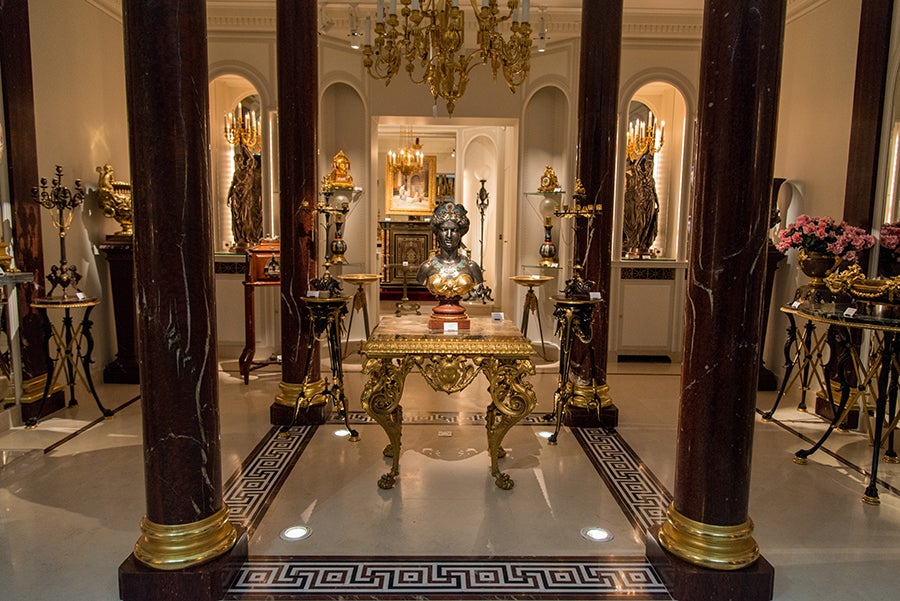
About the Seller
4.9
Vetted Seller
These experienced sellers undergo a comprehensive evaluation by our team of in-house experts.
Established in 1997
1stDibs seller since 2018
74 sales on 1stDibs
Typical response time: <1 hour
Associations
International Confederation of Art and Antique Dealers' Associations
- ShippingRetrieving quote...Ships From: PARIS, France
- Return PolicyA return for this item may be initiated within 7 days of delivery.
More From This SellerView All
- Neo-Greek Inkwell by C.G. Diehl, E. Frémiet and J. Brandely, France, Circa 1867By Jean Brandely, Charles-Guillaume Diehl, Emmanuel FremietLocated in PARIS, FRSigned Diehl à Paris. Wood and silvered copper inkwell. Central drawer ornamented with an escutcheon and flanked by two small lateral drawers forming two containers, surmounted by a lid representing a nestling. Central niche ornamented with a winged creature. Inkwell flanked by two felines. Toped by a penholder representing a Moorish head resting on an eagle claw. This exceptional piece was realized thanks to the collaboration of ornemanist J. Brandely, sculptor E. Frémiet and cabinet-maker C.-G. Diehl. The motif of the fantasy creature dear to Diehl, is to be seen on the famous cabinet made by him in 1867 and now exhibited at the Metropolitan Museum of Art in New York (Inv. 1989.197). Arriving in Paris in about 1840 Charles-Guillaume Diehl (1811-1885) founded his cabinet making and decoration firm at 19 rue Michel-le-Comte in 1885. His workshops produced elegant little pieces of furniture in rosewood and thuja and novelties with bronze and porcelain embellishments (see “Les ébénistes du XIXème siècle”, D. Ledoux-Lebard, Ed. de l’amateur, 1982, p.164). It was his luxury boxes, however (liqueur cellarettes, cigar cabinets, games boxes, cashmere cases, jewelry cases) which assured Diehl’s renown (see “l’Art en France sous le Second Empire”, Exposition Grand-Palais, Paris, 1979, p.133). Already rewarded with a bronze medal at the Universal Exhibition of 1855 in Paris, he exhibited a jardinière with china columns and a liqueur cabinet at the Industrial Arts Exhibition in 1861. In collaboration with the designer Jean Brandely (active from 1867 until 1873), Diehl renovated his decorative repertory and created astonishing pieces of furniture in the Grecian style which had a dazzling success at the Universal Exhibition in Paris in 1867, where his cabinets also won a silver medal. Certain motifs were so typical of Diehl’s work that they received extensive commentary by the art critic J. Mesnard in his book “Les Merveilles de l’Exposition Universal de 1867” (vol. II, pp. 133 & 149). He writes of a table of which “the pendant bearing hooks and the fan shaped radiating motif which ornaments the entablature are engraved with love” (p. 133) and a jewelry case where “The head in fine Grecian style makes up the essential part of the fine gilt bronze ornamentation” (p. 149). For this Universal Exhibition Diehl also formed a partnership with two famous sculptors: Emile Guillemin (1841-1907) who carved the relief for a mahogany sideboard with galvanic gilt bronzes (Orsay Museum, Paris, Inv. O.A.O. 992) and Emmanuel Frémiet (1824-1910) who executed the low relief for a cedar medal cabinet...Category
Antique 1860s French Greek Revival Inkwells
MaterialsCopper
- Pair of Neo-Greek Pedestals. C.G. Diehl & J.Brandely, France, circa 1867By Jean Brandely, Charles-Guillaume Diehl, Lebeuf Milliet & Cie Creil MontereauLocated in PARIS, FRExceptional pair of neo-Greek style pedestals, made in blackened pearwood, gilded galvanic bronze and glazed earthenware. The sheath-shaped shaft is decorated with rectangular plates...Category
Antique 1860s French Greek Revival Pedestals
MaterialsBronze
- Lovely Neo-Greek Planter Attributed to C-G Diehl, France, Circa 1870By Charles-Guillaume DiehlLocated in PARIS, FRCircular plant pot with a double tray united by a black tripod attributed to C-G Diehl. Charming wood marquetry. A beautiful gilded bronze adornment complete this piece. Arriving in...Category
Antique 1870s French Greek Revival Planters and Jardinieres
MaterialsBronze
- Fine Neo-Greek Clock Set by H. Houdebine, France, Circa 1867By Henri HoudebineLocated in PARIS, FRDial signed H. Houdebine, Fabricant de Bronzes, Rue de Turenne 64, Paris and clockwork signed Japy Frères & Cie – Médaille d’Honneur A very fine neo-Greek style clock set made up of...Category
Antique 1860s French Greek Revival Table Clocks and Desk Clocks
MaterialsBronze
- Neo-Greek Gueridon Attributed to F. Barbedienne, France, Circa 1880By Louis-Constant Sevin, Ferdinand BarbedienneLocated in PARIS, FRA similar model was exposed at the 1889 Paris Universal Exhibition ( see picture attached) Patinated and gilded bronze gueridon with four paw feet joined by X-shaped stems, attributed to Sévin and Barbedienne. Round green marble top mounted with a bronze rim adorned with oves and pearls motif. Born in 1821 and dead in Paris in 1888, Louis-Constant Sévin was apprenticed to the parisian sculptor Marneuf. In 1839, he joined the sculptor-modelors Phénix and Joyau, as designer, and designed silver-smith’s objects for famous firms like Denière, Froment-Meurice, Morel and Duponchel. During the Revolution in 1848, C. Sévin joined Morel in London, as workshop manager and designed pieces that Morel exhibited in 1851. Back in France in 1851, C. Sévin went to Limoges and designed models for the porcelain factories of Jouhanneaud and Dubois of which many pieces were exhibited at the Universal Exhibition in 1855. From this date on, he worked for Ferdinand Barbedienne as sculptor-ornemanist until the end of his life. Sévin’s works are considerable, he designed furniture bronzes for the « hôtel de La Païva ». At the London Exhibition in 1862, he was awarded a medal « pour l’excellence artistique des meubles qu’il a dessinés et qui sont exposés par Barbedienne » : for the artistic excellence of the furniture he designed and which is exhibited by F. Barbedienne. He won a second class medal at the Union centrale des Arts décoratifs Exhibition in 1863 and was awarded a gold medal as « cooperator ». F. Barbedienne said that posterity would remember Sévin’s compositions. The most extraordinary object designed by C. Sévin for F. Barbedienne, was a Renaissance style gilded bronze monumental clock...Category
Antique 1880s French Greek Revival Center Tables
MaterialsMarble, Bronze
- Pair of Neo-Greek Andirons by F. Barbedienne, France, Circa 1870By Ferdinand BarbedienneLocated in PARIS, FRMeasures: Height : 47 cm (18,5 in.) ; Width : 70 up to 96 cm (27,5 – 37,8 in.) ; Depth : 6 cm (2,3 in.) A rare pair of square shaped andirons, made in gilded bronze and polychrome...Category
Antique 1870s French Greek Revival Fireplace Tools and Chimney Pots
MaterialsBronze, Enamel
You May Also Like
- Antique Napoleon III Period Oak and Silvered Bronze Tobacco Cabinet by DiehlBy Charles-Guillaume DiehlLocated in London, GBCrafted by the acclaimed cabinetmaker, Charles-Guillaume Diehl (1811-1885), this tobacco (humidor) cabinet is a truly exquisite piece of antique oak furniture...Category
Antique Late 19th Century French Neoclassical Cabinets
MaterialsBronze
- Moderns by Gaston DiehlLocated in Bradenton, FLThe Moderns by Gaston Diehl, a treasury of painting throughout the world. Hardcover book with dustjacket. First edition published in 1978 by Crown Publishers, Inc. of New York. Print...Category
Vintage 1970s Italian Books
MaterialsPaper
- Large Greek Style Repousse Oval Metal PlaqueLocated in Guaynabo, PRThis is a large Greek style repousse oval metal plaque depicting a scene of a Spartan warrior trying to defend himself against two nudes warriors from another tribe. There are two shields standing at each side of them. There are also a Spartan helmet...Category
20th Century Greek Greek Revival Historical Memorabilia
MaterialsMetal
- Antique Japanese Buddhism Book Edo Period, circa 1867Located in Barcelona, BarcelonaAntique Japanese Buddhism book Edo period, circa 1867 Woodblack print book Book dimensions: 226 mm x 159 mm There are damages because it is an...Category
Antique 1860s Japanese Edo Books
MaterialsPaper
- 1930s Bronze Cigar Lighter Siegfried DDD Hygieia Snake Martini Glass PaperweightLocated in Hyattsville, MDHeavy bronze striker/lighter with snake on martini glass or hygieia symbol for health. Marked; Siegfried DDD (30) McMXXXVII (1937) No flint included, so not making fire, sold as-is...Category
Vintage 1930s American Greek Revival Tobacco Accessories
MaterialsBronze
- Bronze Jewelry Box Ancient Sarcophagus Reliefs Greek Roman Caesar GladiatorBy Line VautrinLocated in Hyattsville, MDA wonderful heavy cast bronze, hinged/lidded box, lightly polished, and glowing. Depicting ancient relief scenes / characters of Ancient Roman or Greek...Category
Vintage 1920s Italian Greek Revival Decorative Boxes
MaterialsBronze
Recently Viewed
View AllMore Ways To Browse
Brass Antique Ashtray Stand
Rams Horn Snuff
Crocodile Cigar Case
Gucci Table Lighter
Lighter Gimbal
Smokers Compendium
Vintage Ronson Petrol Lighter
1970s Shell Lighter France
Antique Bone Cutter
Antique Gas Lighter
Arts And Crafts Smoking Stand
Brass Owl Ashtray
German Midcentury Aluminum Jeep
Owl Match Striker
Tinder Lighter
Black Lapis Ashtray
Cartier Pocket Lighter
Dunhill Cigar Ashtrays
